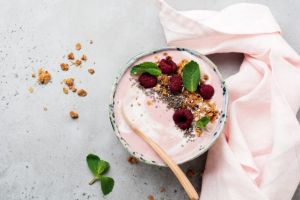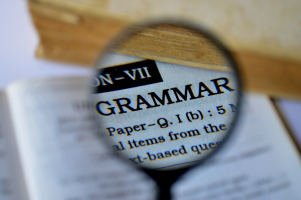Top 14 Best Tips to Improve Your Buttercream Frosting
You've probably had the pleasure of tasting a homemade buttercream if you've ever bitten into a slice of delectable birthday cake with creamy frosting. Of ... read more...course, buttercream isn't utilized in every cake, but it is a highly regarded sweetener and is used in a variety of desserts. Even though there are just a few ingredients needed for this frosting, mistakes can still happen. The outcome of buttercream frosting can be greatly improved by learning several strategies to use. By using the advice in this article, you may make your buttercream cloud-like, tasty, and pleasing to sight. Read on for more information.
-
Making buttercream with real butter is one of the most important processes in creating delicious buttercream. In a pinch, it may be tempting to substitute shortening or margarine for butter. It is never a good idea to use a butter substitute in buttercream frosting because these products badly lack the rich flavor that butter possesses by nature. When you don't use the real thing, the frosting will not only taste inferior, but it will also have a different consistency.
Shortening is quite greasy, but margarine frequently contains water, making it unsuitable for icing. Therefore, pay great attention to the butter product you select while purchasing baking supplies. Some products may look like real butter when they are actually a blend or spread that resembles the creamy, decadent butter that everyone adores.

Use real butter 
Use real butter -
There are several reasons why using butter that is at room temperature is necessary for creating buttercream. The frosting's texture can be badly impacted by using cold butter, which is the first justification. No matter how vigorously you beat the butter, it won't magically whisk into a pillowy consistency if the butter is rock-hard; the frosting will still be lumpy. Additionally, using chilled butter may cause the frosting to split, giving it a cottage cheese-like appearance that is undesirable.
Finally, avoid using your mixer to beat cold butter because doing so could harm the appliance. It may potentially subject the motor to unnecessary wear and tear, reducing the lifespan of your device. With all of this in mind, it is obvious that leaving the butter out before creating the frosting is the best course of action. You'll get the outcomes you want if you plan ahead and take it out of the fridge to soften it. Once you deal with room-temperature butter, you probably won't look back.

Make sure the butter is at room temperature 
Make sure the butter is at room temperature -
Your buttercream may be gritty if you use the incorrect sugar when creating frosting. Although some individuals would believe that the type of sugar used wouldn't really matter, this is regrettably untrue; powdered sugar is always the best option. Confectioners' sugar is naturally light and soft, so when it is beaten with butter, it creates lovely buttercream. However, due to its sandy texture, utilizing granulated sugar can be devastating for your frosting.
Fortunately, it is possible to produce powdered sugar from granulated sugar if you find yourself in a bind and don't have any on hand. All you need is a powerful blender, cornstarch, and sugar in granule form. The proper granulated sugar to cornstarch ratio is 1 tablespoon to 1 cup. Make some quick confectioners' sugar by adding the items to the blender and blending for 30 seconds.
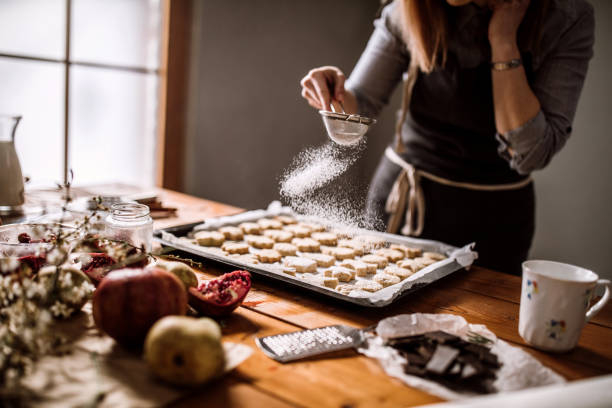
Use powdered sugar instead of granulated sugar 
Use powdered sugar instead of granulated sugar -
Sifting the powdered sugar before using it is another technique to ensure that your buttercream comes out lump-free. One of the worst baking mistakes you may make is forgetting to sift some ingredients. Sifting makes flour, sugar, and other dry materials airier and lighter by removing all the undesirable clumps. What then, if you don't have a sifter? If you don't have a sieve, don't worry; you can still learn how to sift ingredients.
As with flour, you may simply whisk the confectioners' sugar into a finer consistency by breaking up the sugar clusters that have formed. It won't always be as light as a sieve would make it, but this simple exercise will surely be beneficial. Sifting can seem like a pain, but once you realize how much of a difference it really makes to your frosting, you'll be glad you took the time to do it.

Sift the powdered sugar 
Sift the powdered sugar -
Here is a baking tip that could change everything for many people. Have you ever had trouble getting buttercream to keep its shape as well as you intended it to? You might want to try using a surprising ingredient for superior buttercream frosting to prevent this: marshmallow fluff. It goes without saying that marshmallow fluff is delightfully fanciful, but when combined with buttercream, you can only imagine how pleasant it is. This addition would undoubtedly improve your frosting's flavor while also giving it a slightly different texture (in a good way).
You might need frosting that adheres to certain cakes and pastries you make, so it can't be too loose. The marshmallow fluff steps in to save the day at this point. The best aspect is that you may experiment and adjust the number of ingredients as necessary. Test the consistency to your heart's content by tasting it as you go. Always start with a tiny dose, then increase as necessary.

Add marshmallow fluff to make it hold shape 
Add marshmallow fluff to make it hold shape -
Occasionally, adding too much vanilla extract or other liquids to buttercream can result in watery frosting. Adding extra powdered sugar might not be the best course of action if you have already added the ideal amount because it could make the frosting too sweet. In this situation, a small amount of cornstarch added to the buttercream can work miracles. The icing can be made more substantial by adding cornstarch, and the greatest part is that the flavor won't be significantly changed. This straightforward advice is crucial if you're sick of sloppy frosting, and it's quite simple to apply.
Use one teaspoon of cornstarch for each cup of confectioners' sugar. Avoid blending the cornstarch directly into the frosting for optimal results (this can cause lumping). Instead, create a slurry using just enough milk or cream to help the cornstarch dissolve effectively. Although it may seem counterproductive to add additional liquid to the icing, the cornstarch will function as intended. Therefore, save your frosting the next time it becomes runny since it can still be fixed.

Add cornstarch to make it less runny 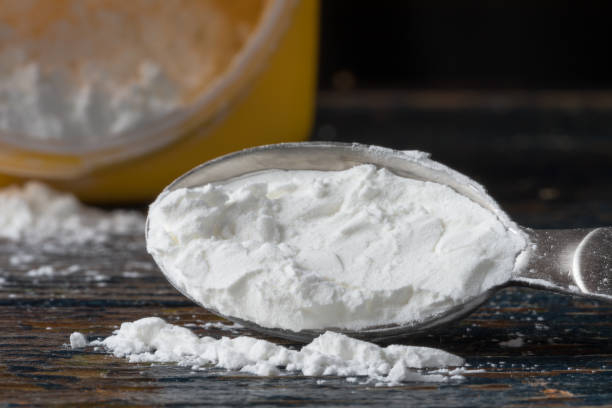
Add cornstarch to make it less runny -
Have you ever questioned why sometimes homemade frosting falls short of bakery icing? You'll be pleased to find that heavy cream is the essential ingredient substitution that consistently gives the frosting a thick, bakery-like texture. You will notice a noticeable difference if you use heavy cream to make your frosting creamy rather than milk. In addition to having a richer flavor than milk, it also has a better consistency. The heavy cream is less likely to thin out the frosting too much because it is on the thicker side.
The product's high butterfat content is to blame for its superior taste and texture. It makes sense why there is such a pronounced discrepancy between milk and cream as milk has more than 30% less butterfat than cream. Because you don't need to alter the recipe's quantities, the move is simple. To achieve this, simply replace the entire amount of milk with heavy cream.

Use heavy cream instead of milk 
Use heavy cream instead of milk -
Upgrade your buttercream with new tastes to enhance your buttercream game. Actually, one of the mistakes you're making with homemade icing and frosting is probably not enriching it in some manner. The traditional method of utilizing vanilla essence is, of course, always an option and a good one at that. It goes without saying that vanilla complements all foods and flavors, including chocolate, caramel, cinnamon, and fresh fruit. Use vanilla paste or fresh vanilla beans if you prefer the vanilla flavor to be more pronounced. But there are lots of other ways to flavor the icing if you want to mix things up.
Bananas, almonds, coconut, and peppermint extracts are all excellent alternatives that could improve the flavor of your cake or other baked items. Coffee enthusiasts can like adding a spray of coffee liqueur to the icing to give it a rich coffee flavor and color. Last but not least, you can substitute components like lemon juice or spices if you don't have extracts or liqueurs. Because lemon juice is so thin, use caution when applying it; you'll need to make up for it with powdered sugar to maintain the frosting smooth and thick.

Add flavoring ingredients 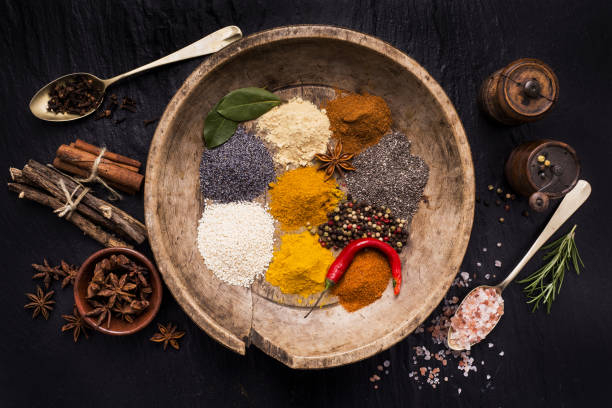
Add flavoring ingredients -
You should be careful not to over-whip your buttercream if you're making it expressly for a cake or other baked dish where the frosting will be on full show. If you do, substantial air pockets will begin to emerge, changing the texture. It goes without saying that you want some air in your frosting to give it a fluffy texture, but there is a narrow line between silky buttercream and one you can't smooth out.
You can remove the buttercream from the mixer when it has a spreadable consistency to avoid this icing error that everyone does. The frosting in the bowl should next be scraped with a rubber spatula to test the texture. If there is resistance, the scraping should continue for a little while longer. Do not worry if you discover that the frosting already has air bubbles in it; this is an easy repair. Simply smash the bubbles on the bowl edges with the same spatula to cause them to disappear.

Don't overmix it 
Don't overmix it -
Some recipes might specify using a whisk attachment, but according to Mom's Baking Co., the paddle is preferable for almost all types of buttercream for a number of reasons. First, regardless of what you are making, the paddle works best for creaming butter and sugar. When comparing a whisk to a paddle, the whisk will always include more air to the food you're mixing. It performs a great job of making the butter velvety smooth. The frosting should contain some air, but a whisk can easily incorporate too much air too quickly.
Not to mention that while handling icing, paddles are simpler to use. Such thick substances frequently become stuck in the whisk's center. You can easily scrape the icing off with the help of the paddle. The best way to get comfortable using your paddle when creating buttercream is to use this traditional vanilla cake recipe (and using a whisk will soon be a thing of the past for you).
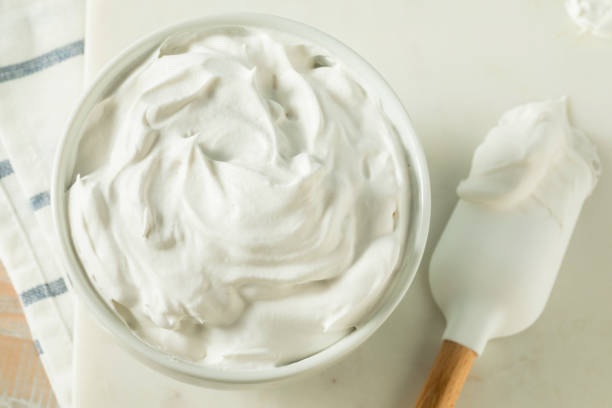
Use a paddle attachment 
Use a paddle attachment -
You'll probably note that most frosting recipes call for a small quantity of salt when you follow them to prepare your frosting. Some people might be unsure if adding such a tiny quantity will make a difference and decide not to. However, adding salt balances the flavors, thus you should never leave the salt out of sweet foods. Frosting that is either too sweet or not sweet enough can both be fixed with salt.
Even a small amount of salt can improve the flavor of the powdered sugar in the frosting and give it the finishing touch it needs if the frosting tastes good but seems incomplete. This has a similar effect to adding espresso to chocolate treats to enhance the chocolate flavor. On the other hand, if your buttercream is too sweet for you to eat, adding a little salt to taste can help balance everything out and cut the sickly sweetness. So, in any case, adding salt to your icing is your best bet.

Add a pinch of salt 
Add a pinch of salt -
Following the exact order while adding the ingredients is one simple approach to making the buttercream of your dreams. Before adding anything else, you should begin creaming the butter. It may be tempting to throw everything into a bowl and hope that it will blend nicely, but that isn't always the case. As an alternative, try blending the room-temperature butter until it turns paler in color and has a lighter texture. The sugar can now be added, but do so gradually. By doing so, the mixture will have enough time to adapt to the additions and everything will integrate easily.
There is always the option to do it by hand with a little elbow grease if you don't have a stand mixer. Use the same procedure, but start by beating the butter. By doing this, you may help the frosting become smooth and put it on a variety of baked goods. After all, there are numerous frosting varieties and applications, but buttercream is among the most adaptable of all of them.
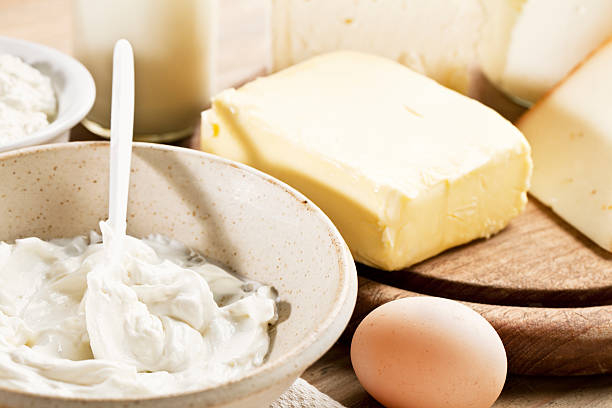
Cream butter first before adding sugar 
Cream butter first before adding sugar -
When using a mixer to make traditional buttercream frosting, the straightforward procedure of scraping down the bowl is crucial. Although the mixer does a good job of catching many ingredients on its own, it doesn't always do so perfectly. The best course of action is to pause the mixer occasionally, grab a rubber spatula, and scrape the bowl's sides. If necessary, you can also lower the bowl so that you can completely reach under the attachment to scrape the bottom. You'll probably discover excess butter or sugar clumps adhering to the sides and bottom after doing this.
Bypassing this step can result in parts of the final frosting that wasn't completely incorporated. This can result in the inconsistent flavoring of the buttercream. Additionally, attempting to incorporate the excess butter into the frosting at the last minute may result in unintended lumps because the extra butter on the sides is probably tougher than the light frosting.

Scrape the sides of the bowl during the mixing process 
Scrape the sides of the bowl during the mixing process -
A fun technique to personalize and improve the frosting's appearance is to add food dye to it. The edible colorant can be a baker's best friend, whether you desire a straightforward colored icing or a dessert with a rainbow of colors. Although liquid food coloring is widely used and simple to find, gel food coloring performs significantly better. First off, because of its thicker consistency, it won't cause your butter to get drier.
When you want a light shade, liquid coloring can be OK, but if you want a brighter or deeper hue, gel coloring is unquestionably the best option. Another advantage of utilizing gel is that you use less product because a little goes a long way. The equivalent of numerous drops of fluid can be achieved with just one drop of gel pigment. If you want to improve your baking skills, think about making an investment in gel coloring agents.

Use gel food coloring rather than liquid 
Use gel food coloring rather than liquid

















